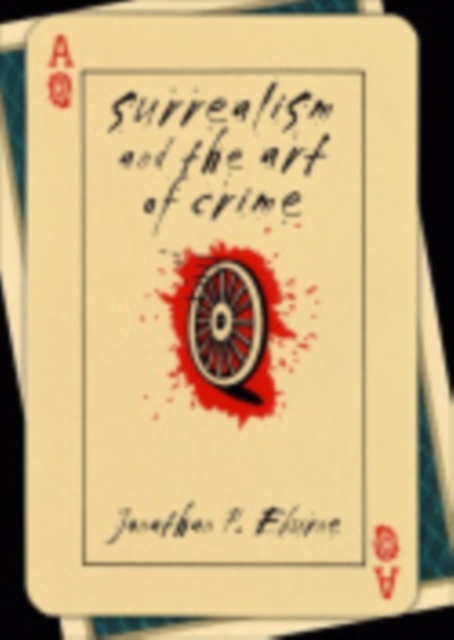Surrealism and the Art of Crime

Surrealism and the Art of Crime
Corpses mark surrealism's path through the twentieth century, providing material evidence of the violence in modern life. Though the shifting group of poets, artists, and critics who made up the surrealist movement were witness to total war, revolutionary violence, and mass killing, it was the tawdry reality of everyday crime that fascinated them. Jonathan P. Eburne shows us how this focus reveals the relationship between aesthetics and politics in the thought and artwork of the surrealists and establishes their movement as a useful platform for addressing the contemporary problem of violence, both individual and political.In a book strikingly illustrated with surrealist artworks and their sometimes gruesome source material, Eburne addresses key individual works by both better-known surrealist writers and artists (including André Breton, Louis Aragon, Aimé Césaire, Jacques Lacan, Georges Bataille, Max Ernst, and Salvador Dalí) and lesser-known figures (such as René Crevel, Simone Breton, Leonora Carrington, Benjamin Péret, and Jules Monnerot). For Eburne "the art of crime" denotes an array of cultural production including sensationalist journalism, detective mysteries, police blotters, crime scene photos, and documents of medical and legal opinion as well as the roman noir, in particular the first crime novel of the American Chester Himes. The surrealists collected and scrutinized such materials, using them as the inspiration for the outpouring of political tracts, pamphlets, and artworks through which they sought to expose the forms of violence perpetrated in the name of the state, its courts, and respectable bourgeois values.Concluding with the surrealists' quarrel with the existentialists and their bitter condemnation of France's anticolonial wars, Surrealism and the Art of Crime establishes surrealism as a vital element in the intellectual, political, and artistic history of the twentieth century.
PRP: 303.49 Lei
Acesta este Prețul Recomandat de Producător. Prețul de vânzare al produsului este afișat mai jos.
273.14Lei
273.14Lei
303.49 LeiLivrare in 2-4 saptamani
Descrierea produsului
Corpses mark surrealism's path through the twentieth century, providing material evidence of the violence in modern life. Though the shifting group of poets, artists, and critics who made up the surrealist movement were witness to total war, revolutionary violence, and mass killing, it was the tawdry reality of everyday crime that fascinated them. Jonathan P. Eburne shows us how this focus reveals the relationship between aesthetics and politics in the thought and artwork of the surrealists and establishes their movement as a useful platform for addressing the contemporary problem of violence, both individual and political.In a book strikingly illustrated with surrealist artworks and their sometimes gruesome source material, Eburne addresses key individual works by both better-known surrealist writers and artists (including André Breton, Louis Aragon, Aimé Césaire, Jacques Lacan, Georges Bataille, Max Ernst, and Salvador Dalí) and lesser-known figures (such as René Crevel, Simone Breton, Leonora Carrington, Benjamin Péret, and Jules Monnerot). For Eburne "the art of crime" denotes an array of cultural production including sensationalist journalism, detective mysteries, police blotters, crime scene photos, and documents of medical and legal opinion as well as the roman noir, in particular the first crime novel of the American Chester Himes. The surrealists collected and scrutinized such materials, using them as the inspiration for the outpouring of political tracts, pamphlets, and artworks through which they sought to expose the forms of violence perpetrated in the name of the state, its courts, and respectable bourgeois values.Concluding with the surrealists' quarrel with the existentialists and their bitter condemnation of France's anticolonial wars, Surrealism and the Art of Crime establishes surrealism as a vital element in the intellectual, political, and artistic history of the twentieth century.
Detaliile produsului










